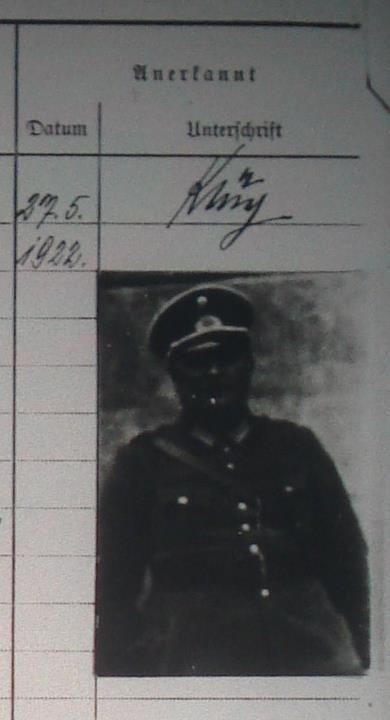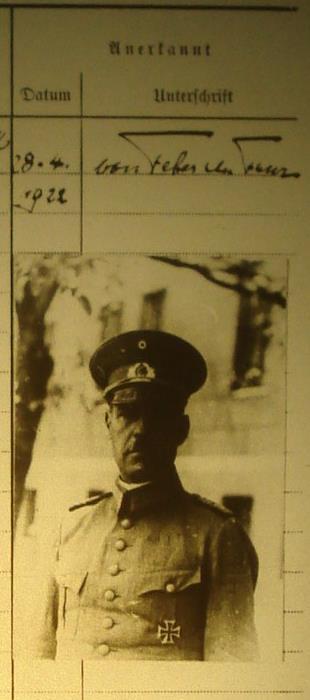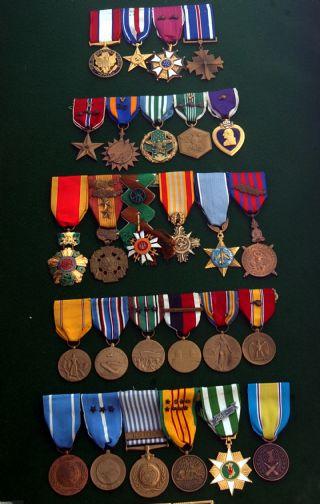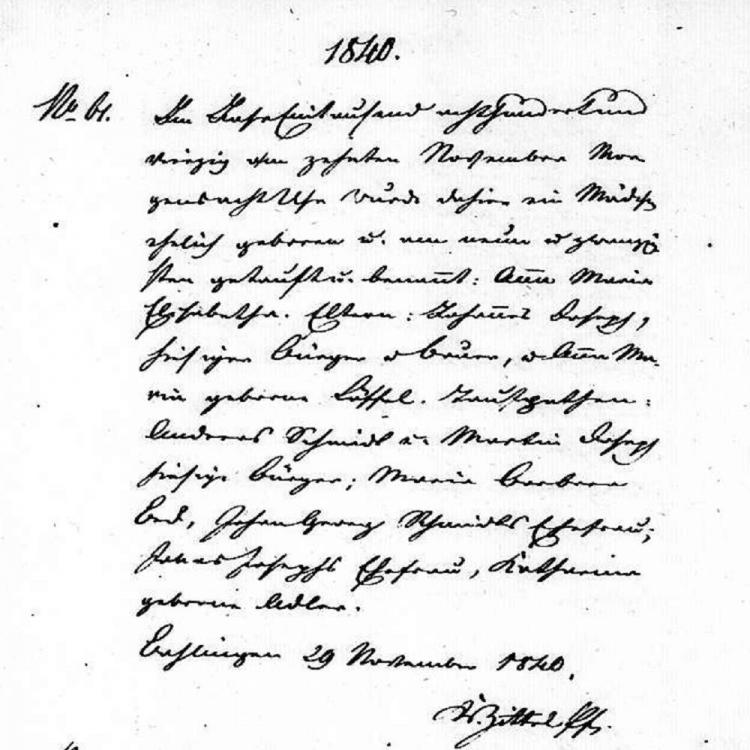-
Posts
4,908 -
Joined
-
Last visited
-
Days Won
97
Content Type
Profiles
Forums
Blogs
Gallery
Events
Store
Everything posted by Dave Danner
-
Wilhelm Schilbach is another aviator from Reuß ä.L., born 1 May 1890 in Greiz. He was commissioned a Lt.d.R. in Reserve-Jäger-Regiment zu Pferde Nr. 1 on 5.12.1914 and was transferred to the Fliegertruppen in July 1915. He received the EK2 on 27.1.15, the EK1 on 28.8.16, and the REKä3X on 29.5.15. He also received the Ehrenbecher. Kagohl 4 put him in for the Ehrenkreuz in 1917, and Greiz replied that he already had it. Kagohl 4 said he never received it, so Greiz asked RJRzP 1 for information. Oberst v. Baerensprung, the commander of RJRzP 1, said Schilbach never received the cross, so Greiz sent him a new one. Kagohl 4 said by that time Schilbach had been transferred to Gruflieg 10, so they forwarded the cross and Greiz received a receipt from Schilbach in June 1917. Given his long history as a decorated aviator, it is possible he was awarded the Kriegsverdienstkreuz later in 1917 or 1918.
-
Heinrich Jahn was an aviator who received the Kriegsverdienstkreuz, but in the Bavarian Army. He was born on 19 September 1892 in Greiz and was a medical student in Erlangen when the war started. He was an observer in FA A 221. Bavarian OLt.d.R. Johannes Semmel, born 3 April 1886 in Gera, was also an observer in various aviation units and received the Kriegsverdienstkreuz. Arthur Oertel was also a Reuß-born Bavarian observer, but as Matt mentions, no Reuß awards are shown in any of his Kriegsranglisten. I also know of a Luftschiffer from Reuß ä.L. with the RKVK, but they don't count as aviators for the Flieger-Erinnerungsabzeichen, and had their own Erinnerungsabzeichen.
-
Ten officers and eight senior NCOs came from GGR 2 to RIR 15 on mobilization: Hptm. Kurt Frhr. v. Forstner, Chef 2./RIR 15, Kdr. I./RIR 15 Hptm. Heinrich v. Kathen, Chef 8./RIR 15 Hptm. Adolf v. Wedemeyer, Chef 6./RIR 15 Hptm. Julius Bock v. Wülfingen, Chef 3./RIR 15 Hptm.d.R. Georg-Henning v. Puttkamer, Chef 9./RIR 15 OLt. Erich v. Michaëlis, Chef 11./RIR 15 OLt. Kurt v. Briesen, Rgts.Adj. RIR 15 Lt. Kurt Bock v. Wülfingen, Adj. I./RIR 15, Rgts.Adj. RIR 15 Lt. Wilhelm Frhr. v. Wrangel, Adj. II./RIR 15 Lt.d.R. Wilhelm Wengeler, 6./RIR 15 Feldw. Knoch, Kastner, Siemer, Bergte, Watermann, Striehse, Hermges, Reschke RIR 15 also received officers from the reserve of IR 15 and IR 55 and from the Infanterie-Schießschule in Wünstorf, and a number of NCOs from GGR 4, as well as some Landwehr officers from the local recruiting area in Westphalia. The enlisted soldiers were mainly reservists called up from the IR 15 recruiting area. It seems a bit unusual for a "regular" reserve regiment to receive so much of its cadre from a Garde regiment. Other GGR 2 officers went to RIR 202 and to the 2.Garde-Ersatz-Regiment.
-
No royals that I know of. Other breast devices worn by known GGR 2 officers I can think of, but again I don't know if any had fangs: (1) the Steckkreuz of the Johanniterorden; (2) the Erinnerungszeichen zur silbernen Hochzeit. Hasso v. Besser had the Erinnerungszeichen zur silbernen Hochzeit, He left service as an Oberleutnant a.D. in 1909 and was recalled on 5.8.1914 with V./LIR 76. On 1.11.1914, he was promoted to Hauptmann a.D., while commanded to LIR 56. He received the EK2 on 31.10.1914 and the MMV2 on 26.11.1914. As of May 1917, these were his only wartime awards. He might have received the EK1 after that point though. His prewar awards were the Centenary, ÖFJ4 and both the 1899 and 1908 Austrian Inhaber-Jubiläumsmedaillen (ÖIJM). There are a bunch of officers with the Johanniterorden. I am not sure how many you could narrow down, other than those with way too many prewar awards for the ribbon bar loops. One possibility is Joachim v. Goertzke. He was wounded and taken prisoner in September 1914, and the EK2 is the only known war decoration I have for him. Like Besser, his prewar awards were the Centenary, the ÖFJ4 and the two ÖIJMs.
-
Hellmuth v. Hagen, * 26.6.1869 in Beßwitz, Pommern, † 10.12.1934 in Berlin-Lichterfelde, took command of II./RIR 202 in 1914. In addition to the decorations listed in the original post, he had the Centenary Medal, the 1908 Austrian Inhaber-Jubiläumsmedaille, the Austro-Hungarian Militärverdienstkreuz 3. Klasse mit der Kriegsdekoration 3. Klasse, and as a decorated battalion commander presumably the EK1 and at minimum the EK2. Joachim v. Oertzen also had the Centenary Medal and the 1908 Austrian Inhaber-Jubiläumsmedaille. Since be was killed so early in the war, we can't say for certain if he had the EK2, but it is a possibility.
-

EK 1870 Researching an 1870 EK awardee
Dave Danner replied to dond's topic in Germany: All Eras: The Iron Cross
If you have or can use a US-based internet proxy, the EK list is here: https://babel.hathitrust.org/cgi/pt?id=mdp.39015049878856&view=1up&seq=5 -

Vietnam Service Medal with ribbon elblems.
Dave Danner replied to Duncan's topic in United States of America
BG Ted Mataxis. He was an infantry battalion commander in World War II, regimental commander in Korea and assistant and acting division commander in Vietnam. Not pictured was the award he called his "perfect attendance award", the Combat Infantryman's Badge with two stars. He also had close ties to South and Central Asia due to service as an observer on the India-Pakistan border and as a military advisor in Iran. We worked together in the late 1980s and 1990s on Afghan-related matters. He also wrote one of my OCS and one of my law school recommendations. His career path can be read here: https://www.soc.mil/ARSOF_History/articles/v11n1_eiche_mataxis.html Reagrding the NDSM, that was a common period error. Campaign stars were supposed to be worn, but OLCs are sometimes seen, and people are less likely to correct a general officer. -
Knabe, Gustav * 08.07.1897 in Wichmannsdorf †13.12.1972 in Bad Dürkheim Battalion and regimental commander in the Afrikakorps and recipient of the Knight's Cross of the Iron Cross. An extensive bio by askropp and myself may be found here: https://forum.axishistory.com/viewtopic.php?t=231661
-
Klug, Heinrich Robert Friedrich Max *12.11.1885 in Röhrfeld, Posen A rarity among World War II retreads. Most were active Imperial officers or were war volunteers commissioned as Leutnants der Reserve during the war. Heinrich Klug was a pre-war Leutnant der Reserve in the reserve of Feldartillerie-Regiment Nr. 42, promoted to Oberleutnant der Reserve in 1916, and given the Charakter of Hauptmann der Reserve a.D. in 1922. 01.10.1936 als Hauptmann d.L. bei den Offiziere d.B des Heeres angestellt (Wehrbezirkskommando Hannover I) 01.02.1937 m.W.v. 01.11.1936 als Hauptmann (E) bei der Wehrersatzinspektion Hannover angestellt 01.06.1937 zum Wehrbezirkskommando Celle versetzt 01.01.1938 Major (E) 19.10.1942 kommandiert zum Wehrmeldeamt Uelzen zur Einarbeitung als Leiter 01.11.1942 zum Wehrmeldeamt Uelzen versetzt 01.11.1943 Oberstleutnant
-
Klüg, Ernst Johannes Hermann * 10.6.1888 in Weiden, Oberpfalz, † 27.11.1944 in Nürnberg 01.09.1934 Major 01.10.1934 Kdr. I./Infanterie-Regiment Bayreuth (laut Stellenbesetzung) 15.10.1935 Kdr. I./Infanterie-Regiment 42 (laut Stellenbesetzung) 01.03.1937 Oberstleutnant 10.11.1938 Kdr. Maschinengewehrbataillon 47 (laut Stellenbesetzung) 01.03.1940 Oberst 26.08.1939 Kdr. Infanterie-Regiment 186 10.02.1942 Lazarett-Aufenthalt (Führer-Reserve Wehrkreis XIII) 08.09.1942 Kdr. Infanterie-Ersatz-Regiment 231 01.04.1943 m.d.W.d.G. des Wehrmacht-Kommandanten von Nürnberg beauftragt 01.07.1943 zum Wehrmacht-Kommandant von Nürnberg ernannt
-
Klug, Emil *09.05.1892 in Würzburg, Bayern 01.07.1935 m.W.v. 01.04.1935 Hauptmann (E), Adjutant des Wehrbezirkskommandos Würzburg 01.04.1938 kommandiert z. OKW (Abwehr) 01.05.1938 kommandiert z. Stab des Generalkommandos des XIII.Armeekorps 01.06.1938 Major (E) 01.08.1938 in den Stab des Generalkommandos des XIII.Armeekorps versebtz 01.02.1939 in das OKW (Abw.Abt. II) versetzt 20.02.1941 kommandiert z. OKH/Chef H Rüst u. B.d.E./Wa A (Wa Z 6) 01.04.1941 in das OKH/Chef H Rüst u. B.d.E. versetzt als Kommandant des Tiergartenblocks 01.01.1942 Oberstleutnant 01.04.1942 zu den aktiven Truppenoffizieren übergeführt 01.11.1944 Oberst Although Bavarian-born, he was a Pionier officer in the Royal Saxon Army from 1910 to 1919.
-

heer Faber du Faur, Moritz von
Dave Danner replied to magu's topic in Germany: All Eras: Signature Database
* 1. September 1886 in Stuttgart † 4. März 1971 in Gräfeling Highest rank reached: Generalleutnant He was Militärattaché in Belgrad from 01.10.1935-10.07.1939 Ritter des Kgl. Württembergischen Militärverdienstordens Here is a 1922 signature from his Personalakte: -
01.07.1935 mit Wirkung von 01.05.1935 im Heer als Hauptmann (E) und Bearbeiter der Gruppe 2 im Stabe der 3. Kavallerie-Division angestellt 15.10.1935 in den Stab der 1. Panzerdivision versetzt 01.12.1936 in den Stab der 3. Panzerdivision versetzt 01.06.1939 Major (16, ab 30.9.41 Ord.Nr. 47) 01.04.1941 zu den aktiven Truppenoffiziere übergeführt 01.03.1942 Oberstleutnant (83) 01.02.1940 Referent in der Heerespersonalabteilung 2 des Heerespersonalamts 01.05.1940 Gruppenleiter in der Amtsgruppe P2 des Heerespersonalamts 27.12.1944 Führerreserve Wehrkreis III I don't know about Askropp's final entry ("01.01.1945 versetzt zum Wehrbezirkskommando Lübben"). It is not listed in his Dienstlaufbahn, and his 1.3.1945 Beurteilung, issued by Wehrbezirkskommando Cottbus, has him assigned there from 28.12.1944.
-

Vietnam Service Medal with ribbon elblems.
Dave Danner replied to Duncan's topic in United States of America
Yes, that is the only arrowhead authorized for Vietnam. Here is a decoration group to an old colleague of mine with eight campaign stars on his Vietnam Service Medal: -
I think that, especially in the 1970s, a lot of European officers, especially Germans and French, were annoyed that they lacked the fruit salad of some other NATO officers, especially Americans. Unless you were a legionnaire or other soldier routinely deployed overseas, you had little to wear. So they approved some questionable foreign awards like the German sport badge and the Dutch Cross for Marching Proficiency (Kruis voor Betoonde Marsvaardigheid), also known as the Cross for the Four Day Marches (Vierdaagsekruis). Then they added the National Defense Medal in 1982. France also later changed the rule keeping conscripts from being deployed overseas, so regular army units could also be sent to foreign missions. And conscription was ended in 1996-2001 anyway. Then they added some more medals, such as the Médaille commémorative française (1995), the Médaille d'Afrique du Nord (1997), the Medaille de Reconnaissance de la Nation (2002), the Médaille de la protection militaire du territoire (2015). I doubt they will ever catch up to the US Air Force or Russians, though. Since 1980, the USAF has added the Air Force Achievement Medal (1980), Air Force Recognition Ribbon (1980), Air Force Overseas Long Tour Service Ribbon (1980), Air Force Overseas Short Tour Service Ribbon (1980), Air Force Training Ribbon (1980), Aerial Achievement Medal (1988), Air and Space Campaign Medal (2002), Air Force Expeditionary Service Ribbon (2003), Air Force Gallant Unit Citation (2004), Air Force Meritorious Unit Award (2004), Air Force Combat Action Medal (2007), Air Force Special Duty Ribbon (2014), Nuclear Deterrence Operations Service Medal (2014), and the Remote Combat Effects Campaign Medal (2019). During the same period, USAF personnel also became eligible for other US armed forces awards which were awarded to all services. These include the Southwest Asia Service Medal (1991), Outstanding Volunteer Service Medal (1993), Armed Forces Service Medal (1996), Kosovo Campaign Medal (2000), Korea Defense Service Medal (2002), Global War on Terrorism Service Medal (2003), Global War on Terrorism Expeditionary Medal (2003), Afghanistan Campaign Medal (2004), Iraq Campaign Medal (2004), and the Inherent Resolve Campaign Medal (2016). Add in foreign and international awards, such as the two Kuwait Liberation Medals, the UN Medal, and the NATO Medal, and some people aren't hurting for bling. I know I am picking on the Air Force. The US Army, Navy and Marine Corps have also added decorations and awards, but at nowhere near the pace of the USAF. For service-specific awards, for example, the US Army has only added one decoration and 6 service ribbons since 1980: the Army Achievement Medal (1981), Army NCO Professional Development Ribbon (1981), Army Service Ribbon (1981), Army Overseas Service Ribbon (1981), Army Reserve Components Overseas Training Ribbon (1984), Army Superior Unit Award (1985), and Army Sea Duty Ribbon (2006). And don't get me started on Canada, mainly because I don't have a clue about Canadian ODM. ? (that's a Tim Hortons doughnut in place of a smiley-face, in case you were wondering)
-
Although he had been deposed in 1860 by Garibaldi, Francis II was still styled King of the Two Sicilies until his death in 1894. His queen was Marie Herzogin in Bayern, daughter of Herzog Max Joseph in Bayern, a collateral line of House Wittelsbach to the royal house of Bavaria. The order is not gazetted in the Verordnungsblatt des Königlich bayerischen Kriegsministeriums. Among ILR officers, Euler and later Generalmajor Otto von Lossow are both shown with the order in the 1895 Bavarian rank list (I can't find one closer to 1891). I would guess the two lieutenants were tasked as protocol officers or the like for a visit by the former monarch and wife to Bavaria, or something similar. That a lot of these former Italian ruling houses (Tuscany, Parma, Two Sicilies, etc.) continued to award their house orders is unsurprising. They, along with former German and other houses, do to this day. That these orders were officially recognized in the Bavarian and Prussian armies is a little surprising. Wehrmacht officers wearing Ernestine House Orders awarded in the 1930s by Herzog Carl Eduard might be a comparable situation.
-
The DOA was a private vanity project, sort of like Who's Who, but Germany also had Who's Who (called Wer ist's) with brief bios. As Glenn mentioned, you paid for your entry and you self-reported your decorations. People often omitted lower awards, especially jubilee medals and sometimes campaign medals. Etzel and Pappritz are among several dozen officers who did not include their China Medals in their entries. On the flip side, the DOA entries also often fail to distinguish between the campaign medals for combatants and those for non-combatants. So Prittwitz is one of many whose China Medal in Steel is simply listed as a China Medal. You can find the 1912 edition of Wer ist's here: https://archive.org/stream/bub_gb_LdsfAQAAMAAJ#page/n7/mode/2up The 1922 edition is here, but only if you have a US internet proxy, due to copyright restrictions: https://babel.hathitrust.org/cgi/pt?id=inu.30000054463744 As Glenn noted, Offizier-Stammlisten from the regiments in which someone served are among the best resources, but these are much harder to find. The vast majority are not digitized and for many regiments they simply do not exist.
-

Another transcription - non-military
Dave Danner replied to Dave Danner's topic in Deutsche Kaiserreich: Man spricht Denglish
Not Balingen in Württemberg, but Bahlingen am Kaiserstuhl in Baden, north-northwest of Freiburg im Breisgau. It was my grandfather's hometown. Almost everyone in his family was from that village for as far back as records go, which is basically the Thirty-Years' War, since many churches and their records from before then were destroyed. My grandmother, who was born in Pennsylvania, was apparently of Württembergisch and Pfälzisch descent, but I have had little luck with records on her family. -

Another transcription - non-military
Dave Danner replied to Dave Danner's topic in Deutsche Kaiserreich: Man spricht Denglish
Thanks! -
All I have for Thyen are the bayerisches König-Ludwigskreuz, the hessisches Kriegsehrenzeichen, and the preußisches Verdienstkreuz für Kriegshilfe. I haven't found anything on an Oldenburg decoration. I went through the Forstliche Wochenschrift Silva from 1913 to 1922 and the Deutsche Forst-Zeitung from 1907 to 1922.
-
Hi, I hope I can get some help with this. There are some missing parts and likely some errors in my transcription. My draft: Im Jahre Eintausendachthunderten vierzig am zehnten November Morgens acht Uhr wurde dahier ein Mädchen ehelich geboren u. am neun _ [zwanzigsten] getauft u. benennt: Anna Maria Elisabetha. Eltern: Johannes Joseph, hiesiger Bürger _________ , ____Maria geboren Löffel. Taufgasten: Andreas Schmidt u. Martin Joseph, hiesige Bürger; Maria Barbara Ernst, Johann Georg Schneiders Ehefrau; Jonas Josephs Ehefrau, Katharina geboren Adler. Bahlingen 29 November 1840
-

Help. Generalleutnant Max Dennerlain
Dave Danner replied to 03fahnen's topic in Wehrmacht Medals, Decorations & Awards
I have for Dennerlein: • Prinzregent-Luitpold-Medaille and Bande der Jubiläumsmedaille für die Bayerische Armee • Militär-Verdienstorden 4. Klasse mit Schwertern • 1914 Eisernes Kreuz 2. Klasse • 1914 Eisernes Kreuz 1. Klasse • Ehrenkreuz für Frontkämpfer • Wehrmacht (Heer) Dienstauszeichnung 4. bis 1. Klasse (2.10.1936) • 1939 Spange zum Eisernen Kreuz 2. Klasse (8.6.1940) • 1939 Spange zum Eisernen Kreuz 1. Klasse (18.6.1940) • 1939 Kriegsverdienstkreuz 2.Klasse mit Schwertern (31.1.1944) • Verwundetenabzeichen in schwarz If he had the Demjanskschild, it was not mentioned in his HPA Personalakte.








